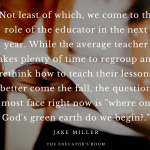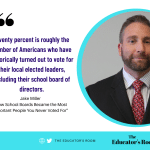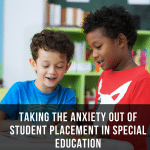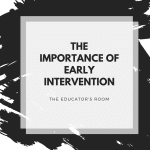I am sitting in the back of the school bus. Waves rock my body as we navigate the red sandy-washed roads. I’ve been riding in traditional yellow buses just about my whole life as a student, teacher, and chaperone. This time is different. Traditional Navajo songs echo through the bus, intermittent with the news Dine’ Bizaad. I don’t understand the ancient Athabaskan language, but I know CDC and COVID 19. The bus slows down, “beep-beep”; in the distance, I see a white, rusty Chevy pick-up leaving a trail of dust as the driver screeches to a halt at the wooden gate. An 11-year-old boy behind the driver’s seat, scoots up to see over the dashboard, his little brown weathered hands clenched the steering wheel.
His umber eyes between the wheel glowing with anticipation to see what his teachers have sent him. A little girl jumps out of the passenger’s side. She stretches up to one of the aides, “Yá’át’ééh!” Her little arms extend to give the aide on the bus her homework, and, in turn, she receives several white bags of frozen meals for breakfast and lunches and a folder of homework. This food is sometimes the only meal these students have for the day. They are over-packed with love and compassion, prepared by the local cafeteria ladies the previous day.
I moved into my new home in the Navajo Nation; my husband has spent the weekend packing up our home from ten years in Alpine, Utah. We just sent our youngest to the University of Utah. We wanted an adventure, but due to COVID 19, we could not leave the country. I told the middle school and Brigham Young University that I would teach in China at the end of July would no longer be an option. Now, I am unemployed.
While unpacking, the power and wifi went out; I am alone. I opened the front door to see some signs of life. All is quiet. I don’t think other teachers have arrived from their summer break. The sun is setting over the magenta mesas of Monument Valley in the Navajo Nation. It’s going to be dark soon. Trying to locate some flashlights, my head becomes cloudy; my breath becomes tight… I feel like I’m suffering from an asthma attack, yet the air is fresh. I reached for my phone and remembered no wifi—panic attack. I lie down on my half-made bed to relax and try to get my mind straight. I am having some doubts about why I am here away from my three college students, my beautiful home, and living in teacher’s housing in the middle of “nowhere.”
Just as I was about to repack my boxes, thinking, “Forget it! I can’t do this!!!” I knelt to pray for strength and support. The power went on, yet still, no wifi to call my husband or one of my daughters to cry. I felt a warm feeling over my body, a sense of comfort that what I am doing was the right thing. I continued to unpack.
The next day, we had our first staff meeting at school. The principal welcomed everyone and told us the COVID plan. The Navajo Nation decided that students would not be attending in-person school this year. We are to teach online. How will we do this when most of our students do not have wifi, let alone electricity, to charge their Chromebook? We are required to wear masks, wash our hands with hand sanitizers and limit our socialization to prevent the spread of diseases. We retire to our prospective homes and start developing curriculum on Canvas, printing the activities into packets. As an Art and Technology teacher, I am attempting to present my curriculum with limited supplies and without wifi. I decided my students could use Google Draw in the digital arts classes. I created instructional videos on designing various activities such as a self-portrait, cartoon characters, landscapes, etc.
During the first week of school, a medicine man blesses the teachers. We gather around the amphitheater, six feet apart, in front of the hogan. I was sitting down on the stone, my legs dangling with tiny red ants crawling beside me, realizing I should have worn closed-in shoes instead of sandals. The ochre sand is burrowing
between my toes; the tumbleweed stickers latch themselves to the balls of my feet. The medicine man and his son are preparing the fire pit for smoking a sage bundle for the blessing. We bowed our heads as he sang the Dine‘ prayer for teachers to be healthy, patient, and encouraged. I am not sure what else was said, but it gave me a feeling of gratitude for having the opportunity to live on this sacred land as a white person. After the prayer, I stood over the smoke, waving my arms, blanketing my body with the sage scent, then returned to an empty classroom.
Each house has a woodpile stacked up like a teepee to keep dry. Families heat their homes with dusty coal or gathered firewood in iron stoves. The local Church of Jesus Christ of Latter-day Saints donated loads of wood collected from recent Salt Lake windstorms. My husband, David, purchased a Ford F-150 to help haul. As he was driving in the deep dark of the night, he hit a deer head-on. He called several times trying to get through with our doggy wifi. I jumped into my car to rescue my husband. As I rounded a bend, I almost hit a mare and a colt strolling down the road. I chickened out, turned around, and went back home. Fortunately, I received another call telling me the bishop/school counselor rescued him. They stuck around while other volunteers emptied his truck. A tow truck driver arrived to haul the pickup to Moab, a two-and-a-half-hour drive north.
David was not happy, yet colliding with an animal or breaking down in the middle of nowhere is commonplace. Our cars get a beating with all the driving, sand storms, and occasional cougar attacks. Yes, cougars attacks. One time, a cougar ripped off the front of a vehicle, chasing after a jackrabbit. The teacher was amused and could not wait to hear the response from his insurance company. The next time the Reading teacher and wife, the Curricular Director, had not made their first payment on a new car when a cougar tore out the bottom of their vehicle trying to get a cat and her kitten. As a result, I am terrified of the dark.
The Navajo Nation is suffering a great deal due to this horrific virus. The Dine’ people is the highest Covid-19 infection per capita in the United States.1 The death rate is one of the highest amongst a population with high rates of diabetes, cancer, and other ailments. My students are experiencing physical and emotional pain. School is a second home for many students. It is a place to receive breakfast and lunch… a place to see their friends… a place of refuge from the trauma they might be experiencing from home… a place where adults show unconditional care and love for them. Our students are traumatized from seeing family members dying before them. The students are needing to find work? As I do mental health checks, my students are not doing well. I feel helpless.
Although our teachers are originally from many places, we were drawn here like a magnet to iron fragments in the red dust. It is a lonely place without the companionship of friends and relatives, therefore, we rely on each other as a second family. If someone needs a babysitter, we pitch in. One family was thinking of leaving at the end of the year when he severely cut his finger. The family has so much support, that they decided to extend another year.
This morning, it was my turn to ride the school bus with the aides to the students’ homes. The weather was getting cold as I rugged myself up in the cold bus waiting for the heaters to kick in. As usual, we hear on the radio the morning songs in the Dine’ Bizaad. Stray dogs waited for handouts beyond the school cattle guard. There are feral dogs everywhere. I feel sorry for them. Last summer, a 13-year-old girl was mauled to death by a pack of wild dogs while running. As we drove towards one property, a copper color four-door sedan darted to meet us with a momma dog and her baker’s dozen trailing behind.
While teaching virtually, I was able to get to know my students through emails, phone calls, and the expressions of their artwork. Typically I am reluctant to give my mobile number to my students, but in this case, I have. It is not unusual to get a text or an email in the middle of the night or on weekends asking questions about their homework or just wanting to share their frustrations about life. I try to answer immediately, just in case they cannot get wifi again.
Every week, I have been calling each of my advisory students. I have formed a bond with many of their grandparents, parents, and aunties. Many of the students look forward to the phone call, asking when they will see me next. One day, one of the students asked if she could come by the school to drop off her homework. I told her that she could simply place her homework in the box out front. “No, Mrs. Johnson, I want to see you.” She was so pleased to meet me in person when she came by. I was delighted to match the face with the voice.
It is mid-year; Navajo Nation President Jonathan Nez has okayed the return of families to the school for tutoring with their advisor. We expressed our excitement at seeing each other in person when setting up appointments! As I was walking two sisters out the door, I said, “Goodbye, looking forward to seeing you in a few days.” The younger 7th grader quickly wrapped her skinny little arms around me and held me. I was a bit startled but quickly surrounded her in a hug. This pandemic is so unfair.
My head is leaning against the bus window as I gaze at the rising sun peeking over the golden mesas. A herd of mustangs are galloping alongside the bus. Their long majestic manes soar in the wind. Their breath is heavy and wild; I think they are enjoying the warmth of the morning sun.
The end of the school year is approaching. The race is on, getting all the assignments in order for Seniors to graduate. On the day of graduation, I did not know many of them. With the usual graduation ceremony cap and gown, girls wore their traditional squash blossoms necklace and earrings, with their hair tied into a traditional tsiyééł. The young men wore turquoise or “doo tl’ izh ii” necklaces, bracelets, and slightly scuffed cowboy boots. Their jewelry is highly prized for its scarcity and beauty. For many of these students, the jewelry holds a significant meaning due to the connection to family members who either made or gifted these priceless heirlooms—carrying a legacy for their family as well as the Dine’ nation.
I am now in my second year teaching in the Navajo Nation. Living here has become easier for me. My husband had to move to Reno for his work. My children are in Provo and Salt Lake. Because of the loneliness, I am experiencing, I am uncertain how long I will stay. I do know that I love my students and my colleagues. I take every moment to embrace the Navajo people. As I gaze at the sunset reflecting off the vermilion mesas, I no longer see darkness, I see the stars, moon, and the Milky Way’s huge expanse hugging the desert.
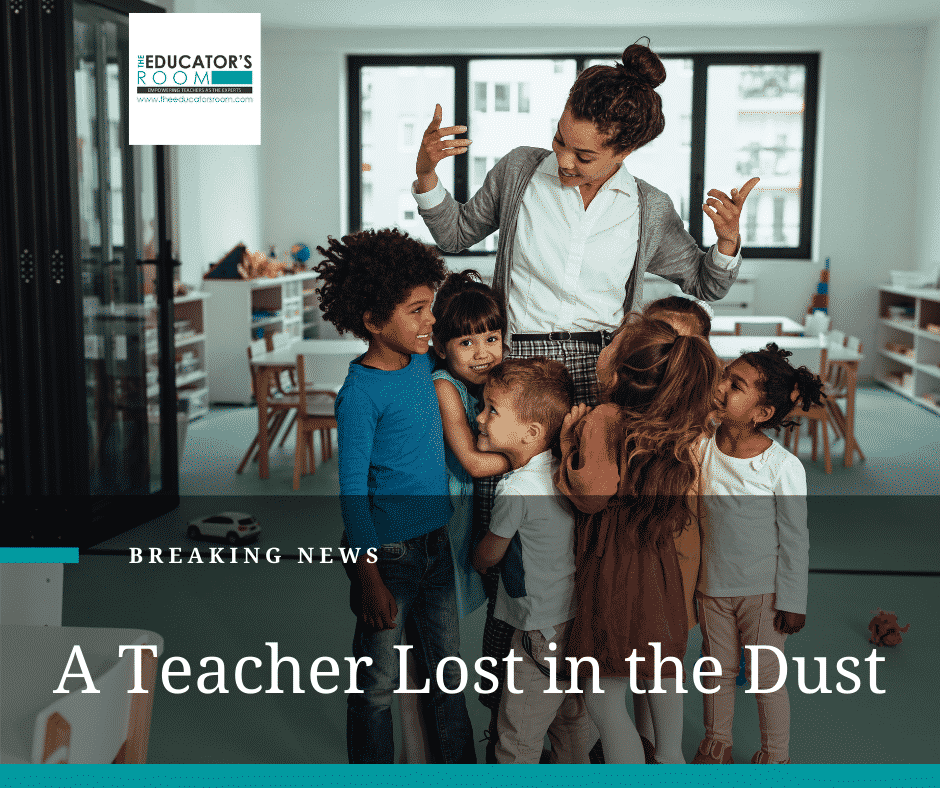
1“COVID-19 is killing Native Americans. Here’s how to help – USA Today.” 24 Oct. 2020, https://www.usatoday.com/story/news/nation/2020/10/24/covid-native-americans-how-to-help-navajo-nation/3652816001/. Accessed 23 Dec. 2021.
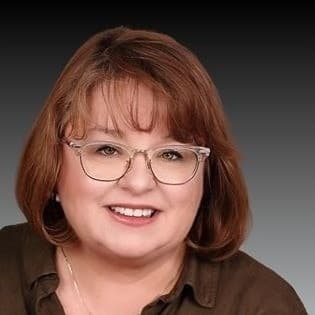
Natalie Sparks Johnson began her teaching career 26 years ago as a middle school Art teacher in Salt Lake City, Utah. A few years later, moved to Australia with her Aussie husband. She taught Art, Foods and Consumer Science, and College & Career Readiness in Brisbane, Northern Territory, and Perth. Thirteen years later, she moved back to Utah. After raising 3 kids, wanted another adventure to Monument Valley High School in the Navajo Nation. Best job ever!! She received her BA at Southern Utah University, MEd at the University of Queensland (Australia) and she’s currently working on a Masters of Education in Education Policy at Southern Utah University. She is working on her endorsement in ELL, Language Arts, and Digital Technology.


